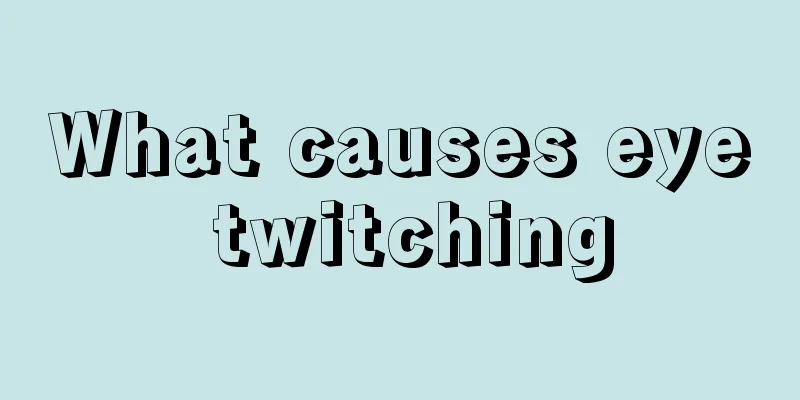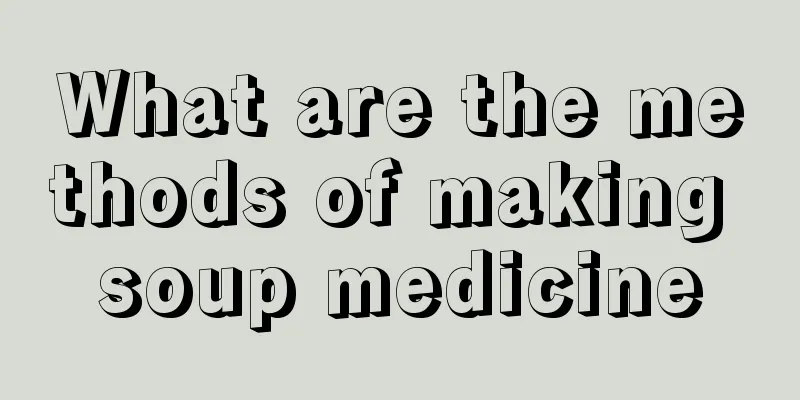What causes eye twitching

|
Many people have experienced eye twitching in their daily lives, which is commonly known as eyelid twitching. People usually say "left eye twitching means wealth, right eye twitching means disaster". There is even a song that goes "left eyelid twitching means good luck is coming". Of course, this is just superstition. In fact, most of the causes of eye twitching are eye fatigue, but we do not rule out the possibility of certain diseases, such as facial muscle spasms or other eyelid spasms. Let’s take a closer look at the causes of eyelid twitching. Eye twitching is actually caused by abnormal excitement of the nerves controlling the eyelid muscles. That is, some of the orbicularis oculi muscle fibers cannot contract continuously and independently in a short period of time, thereby affecting the skin overlying it. The scientific name is "muscle twitching" of the orbicularis oculi muscle. It is normal for the screen to jump for a few seconds to a few minutes each time. It will automatically recover after a period of time. You can also close your eyes and take a rest, or apply a hot towel to your eyes, and eat a balanced diet and get enough sleep to shorten the time your eyelids twitch. To treat eye twitching, you need to relieve fatigue, but some chronic diseases such as high blood pressure, heart disease, diabetes and other diseases can also cause frequent eye twitching. This type of eye twitching is a stubborn disease that troubles many middle-aged and elderly patients. "Although it is not a serious problem, it makes people feel uneasy." Han Shuyun introduced that there is no particularly effective treatment for this stubborn eye twitching in clinical practice. Generally, you can choose to use eye drops that can resist visual fatigue (Xiao Le Dun, Avido, Ai Ming, Xiao Pi Ling). Traditional Chinese medicine also uses acupuncture therapy to stimulate the corresponding eye points and relax and reduce stress to treat eye twitching. It is worth noting that if the eyelid twitches together with the facial muscles, eyebrows and corners of the mouth, it may be a spasm caused by stimulation of the facial nerve. You should seek medical attention immediately, otherwise you will develop strabismus. There are three common causes of eye twitching: (1) Overuse of eyes and physical discomfort. When you overuse your eyes or feel unwell, your eye muscles will twitch involuntarily, causing "eye twitching". This twitch is often caused by increased tension in the nerve fibers that locally control the eye muscles. The "eye twitching" caused by this reason is often sporadic, once or two or three times a day, several times each time, and lasting one to two seconds. Generally, no medication is required, and the symptoms will be alleviated or disappear after proper rest. (2) Eye inflammation. Sometimes, in addition to eye twitching, there may be other symptoms such as eye irritation and red eyes. This is caused by eye inflammation, such as conjunctivitis, trachoma, etc. The symptoms will disappear after treatment with drugs such as rifampicin eye drops and ofloxacin. (3) The nerve fibers that control the eye muscles are stimulated or compressed by inflammation. This condition is relatively rare. At this time, each eye twitch will last for a few seconds. The condition tends to worsen in stages, recurs repeatedly, or is easily induced by tension. You need to go to the hospital for examination. Clinical causes of eyelid twitching: Benign muscle fiber twitching: occurs in conditions such as fatigue and emotional stress. It is a unilateral, temporary twitching of the muscles around the eye. This condition generally does not require treatment and can be recovered by resting and relaxing. Facial muscle spasm: In addition to unilateral eyelid twitching, there is also paroxysmal irregular twitching of the facial muscles on the same side, which is mostly caused by vascular compression of the facial nerve. For this clear vascular and nerve compression, microvascular decompression is an effective treatment method. Reflex blepharospasm: It is caused by local eye lesions such as keratitis, iritis and other diseases. This situation will improve after treating the local eye lesions. Idiopathic blepharospasm: characterized by intermittent or persistent involuntary closure of the double eyelids, without any eye disease. Meige syndrome: In addition to bilateral eyelid twitching, there is also twitching of the lower facial muscles and even the neck muscles. In this case, local injection is more effective and can also effectively relieve facial spasm. Hysterical blepharospasm: Symptoms are similar to those of essential blepharospasm, but suggest that treatment is effective. |
<<: What's the matter with 20 in urine occult blood?
>>: What's the matter with 30 for occult blood in urine test
Recommend
How to make a bubble bath
Bubble bath is a very popular bathing method in d...
Symptoms of sub-health syndrome
Modern people are under great pressure at work an...
What are the symptoms of advanced lung cancer
What are the symptoms of advanced lung cancer? In...
Can skin cancer be cured by applying medicine
Skin cancer is also a relatively serious skin dis...
What is the cause of toothache
Teeth are a very important part of people's o...
Patients should pay attention to the early symptoms of melanoma
Melanoma is a common skin disease that can cause ...
Prevent gastric cancer from your diet and daily life!
The occurrence of gastric cancer is the result of...
Three clinical manifestations of posterior fossa brain cancer
The inner surface of the skull base is uneven and...
Early symptoms and treatment of testicular cancer
Nowadays, due to environmental pollution, water p...
What to do if your nose contains blood
In life, many friends will find that their nasal ...
What is the cause of rectal cancer
Why do so many people still suffer from rectal ca...
What are the methods for students to improve their memory
It is very common that many children encounter pr...
Are colored glass cups poisonous?
Colored glass cups are quite common in our daily ...
What is the reason for the black and purple nail on the big toe? It turns out to be like this
What causes the black and purple nail on the big ...
How to clean earwax, what are the methods and steps
Generally, if there is a lot of earwax, you can c...









